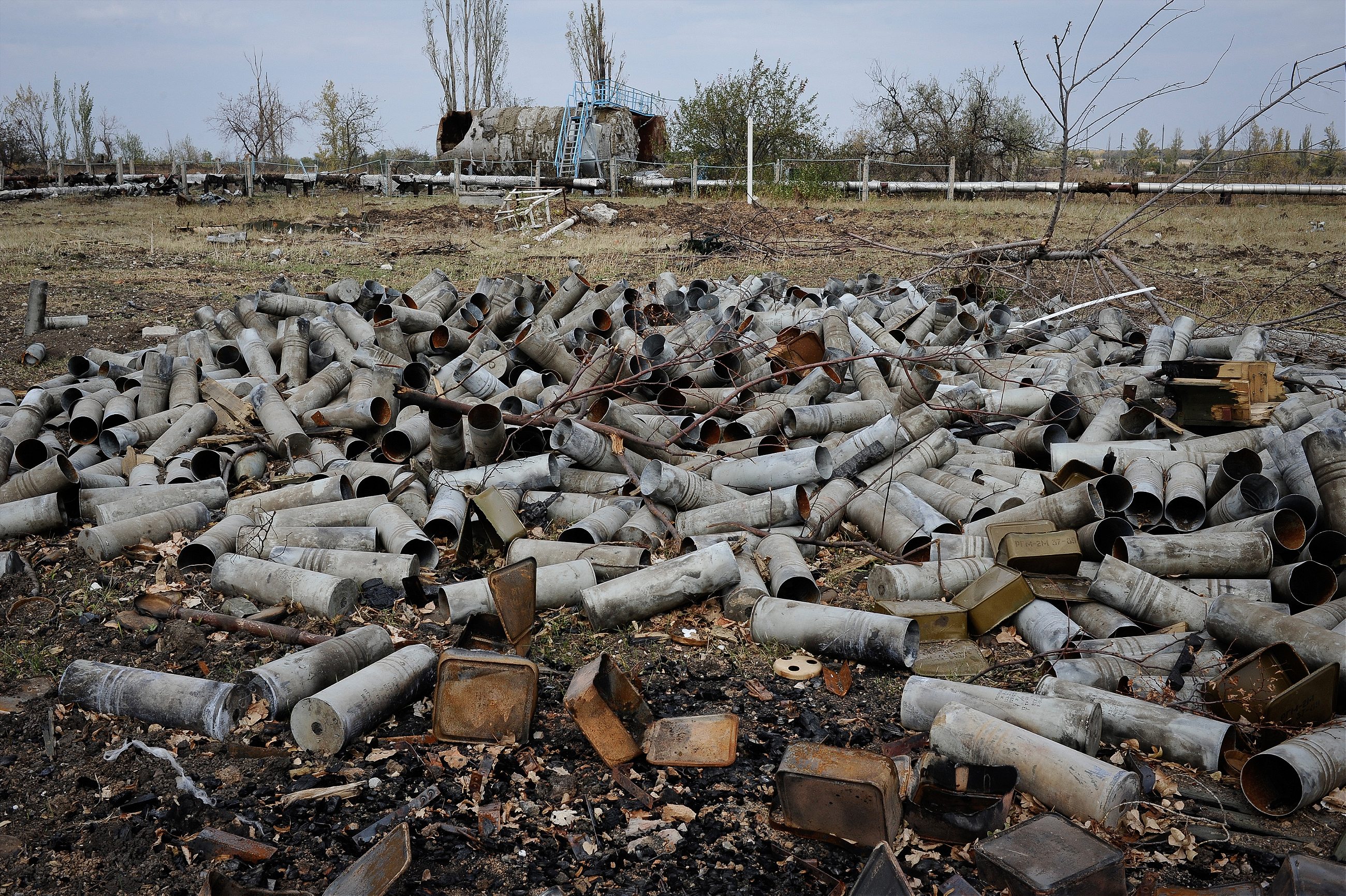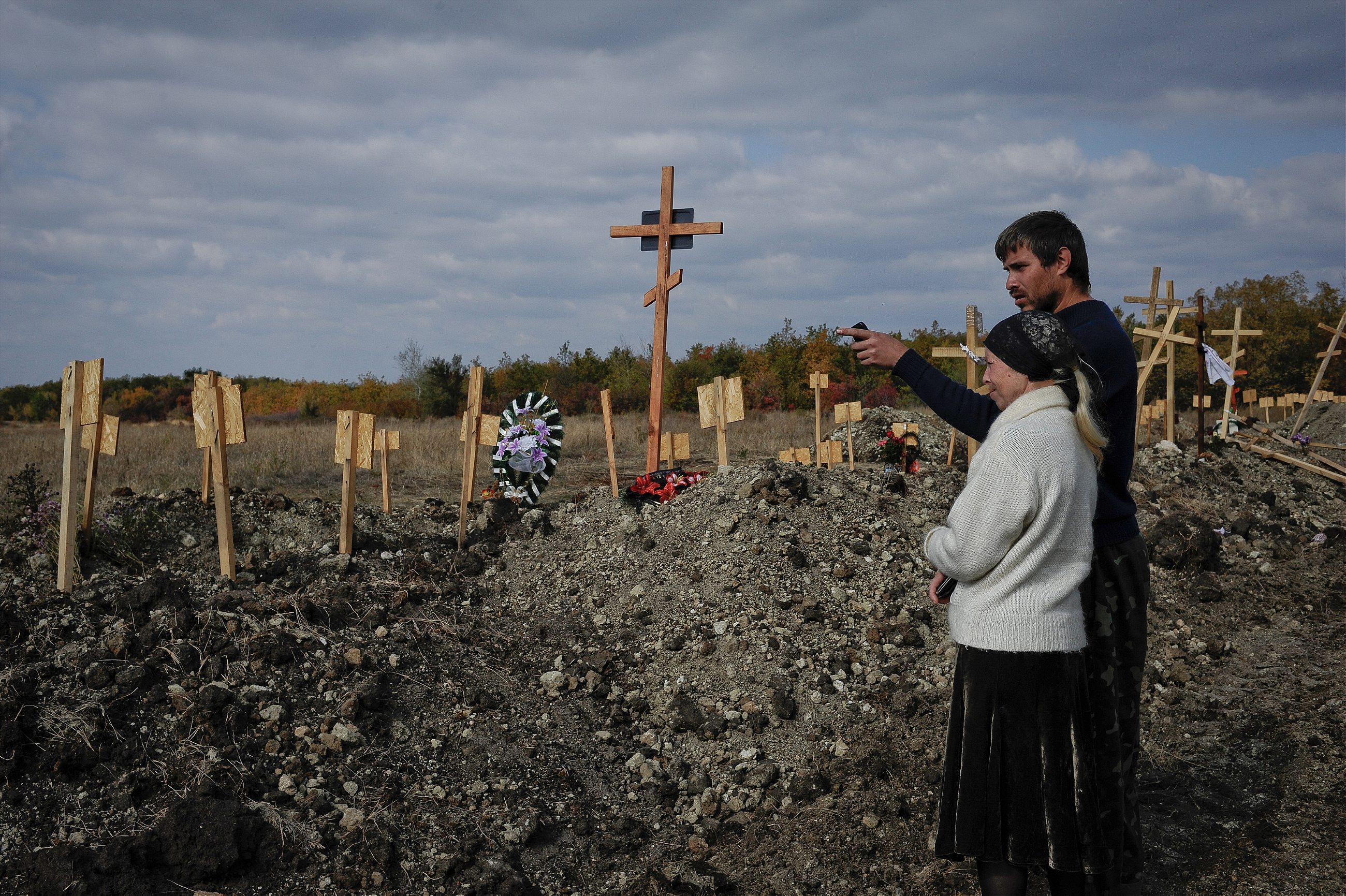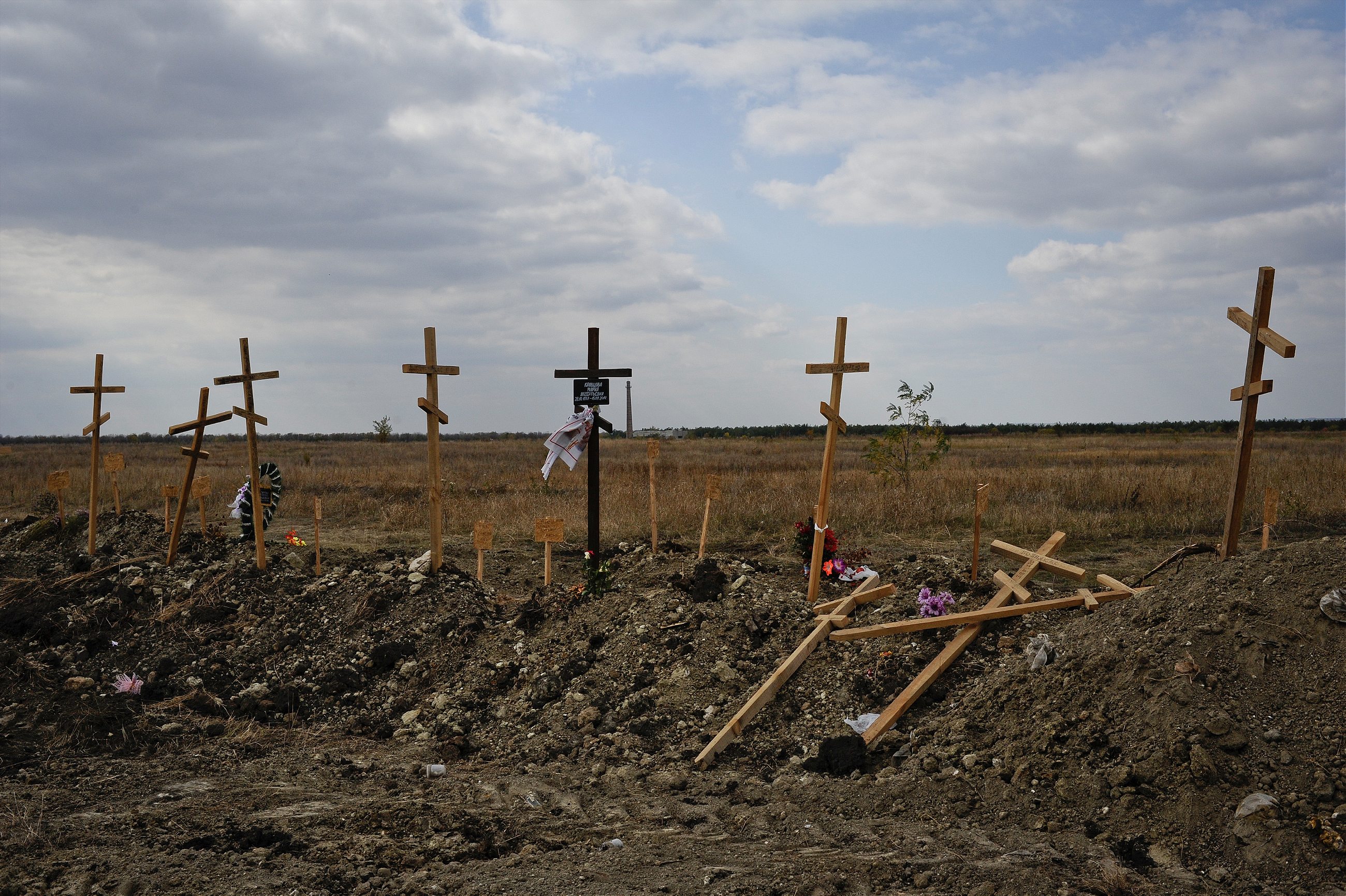In eastern Ukraine, home to the world’s newest breakaway republics, nothing is as it seems.
DONETSK, Ukraine—
The rebels are searching for a bear.
“It should be down that road,” Marina says, pointing to a narrow strip of asphalt littered with tree branches and spent shells.
Our car turns slowly past a bombed out red brick building at a factory some 40 minutes east of Donetsk, Ukraine, capital of the self-declared Donetsk People’s Republic. I sit snug in the backseat, sandwiched between two soldiers from the separatist army and the daughter of a senior commander. She drinks gin and juice from a can; the rest of us look on, sober. Marina, a peroxide blond in camo, rides shotgun. Among these hardened men she serves as both caretaker and conscious, a supply runner and perhaps, at times, a comfort wife. (When we first met, back in April, she asked if I wanted to join her “harem.” To this day, I don’t know if she was joking).
The car slows. We open our doors in front of a faded teal cage. “It’s him!” the commander’s daughter yells. “Styopa!”
And there he is: the bear, big, brown and hungry.
Styopa once belonged to the owner of the factory, an animal lover who fled when the rebels took up residence in his yard—they were a beast too far. So now the insurgents do what they can to keep their adopted “pet” alive. In between bloody battles, they feed Styopa loaves of bread and liters of kefir, a pungent fermented milk popular throughout the former Soviet Union.
“Goodbye my joy,” Marina whispers as we leave. Styopa raises his paw to the cage.
Welcome to Eastern Ukraine, home to the world’s newest breakaway statelets, where nothing is as it seems. Ukraine’s president, Petro Poroshenko, says the worst of the war is over, but many fighters on both sides of the line fear that it has just begun. Officially, there is no war; Kiev calls it an “anti-terrorist operation” and Moscow maintains that it’s not involved at all. Poroshenko promises to keep Ukraine whole, but separatist leaders insist on achieving a measure of independence. The region has become a twisted manifestation of René Magritte’s infamous (non-)pipe. Reality and its representation are estranged; what you see claims to be something else. Is that a Russian soldier? No, it’s a volunteer warrior on vacation! Is that shelling? No, it’s a ceasefire!
Battles continue to rage in several cities
On paper, the separatist forces, which now call themselves the Army of Novorossiya, and Ukrainian government troops should have stopped fighting weeks ago. There should be an 18-mile buffer zone in place, and the two sides should be working towards a political agreement. But in reality, battles continue to rage in several cities, and the body count, already more than 3,500 since violence broke out in late April, continues to rise.
The region hangs in a strange limbo, hoping for peace but preparing for more war. Many who fled during the summer’s heaviest fighting began trickling back to now blighted cities after the ceasefire was announced on September 5. The fledgling and largely unequipped separatist governments struggle to restore a semblance of life to their territories. A normal day has turned into a constant series of collisions between the quotidian and the tragic. Donetsk residents carrying flower-print shopping bags pass by signs pointing to the nearest shelter, spray-painted in red or white on sidewalks and walls. At the Ramada hotel, correspondents scarf down spaghetti carbonara next to gun-toting fighters. A handful of stalls sell meat under blue and yellow awnings at the central market in the shadow of a rebel flag flying from the central pavilion. A small sign advertising a “Ping-Pong club” hangs from a tree downtown, but if you call the number listed an automated voice will tell you that the “subscriber is not available.”

Lyuba is searching for her father.
She and her son Andrei wander down a one-lane road lined with trees turning red and yellow. They approach a makeshift cemetery, a swath of steppe with freshly dug graves in Luhansk, capital of the Luhansk People’s Republic, Ukraine’s other breakaway statelet. Two rows of wooden crosses—113 in all—jut out from the mounds of dirt. This is where they bury the bodies that nobody came to claim while the city was under siege.
Andrei walks the line, examining the names. He pauses. “It’s him!” he shouts. “I found him.”
The plaque reads: Aleksandr Semyonovich Bolgarov, born 1938, died September 4th, 2014.
In late August, after more than a month of life in a city under siege, Bolgarov hallucinated that a shell struck his apartment. “He lost his mind,” Andrei says of his grandfather. Bolgarov wouldn’t leave his bed. He suffered three consecutive strokes, succumbing to the last one.
Andrei and Lyuba come to pay their respects. They pour a small cup of beer and place it atop a pink plastic bag at the foot of the cross. “It should be vodka,” Andrei says, “but we don’t have enough for vodka, so beer will have to do for now.” Lyuba, a minute woman with frizzled hair and dark eyebrows, offers my colleagues and me two of their three cookies. She won’t let us refuse.

Luhansk, some 15 miles from the Russian border, bore the worst of this summer’s chaos. Inside the city, shelling made the streets nearly uninhabitable. Many moved their families away, to elsewhere in Ukraine or across the border to Russia. Those who stayed behind spent days on end in bunkers. Electricity and water were out for months, and have yet to be restored in many neighborhoods.
One consequence of the violence is the prevalence of paranoia. Reality becomes malleable and fear reigns. The persistence of memory makes any compromise fraught.
Nowhere is it more palpable than at the city’s airport, the site of a three-month battle between entrenched Ukrainians and rebels on the assault. As we approach the what’s left of the terminal, two cars full of fighters barrel down the road. We flag them down, and one lanky guy with a camera and a Kalashnikov offers to show us around the premises.
“The tour will take approximately one hour,” says Vik, our guide.
He walks us through rubble and wreckage, pointing out items as if it were a museum. At the edge of the runway, I spot a cheap paperback atop another scorched troop carrier. I turn it over to peek at the blue cover: How to Talk with Angels and Astral Spirits.
“I fear that whoever was reading that book is probably talking with angels already,” Vik quips.
All around us are tree trunks that look like spent matchsticks, and craters deep enough for a small swimming pool. Packs of Bic razors and dented pots lie in the dirt. Near a bunker, I find sandals, mugs, and socks still hanging to dry. Along the road are bags full of toasted bread and melted macaroni. Deeper into the courtyard, another troop carrier stands on its side, its innards exposed. The gears—stark white from the heat of a blast—look like a watch that has stopped.

